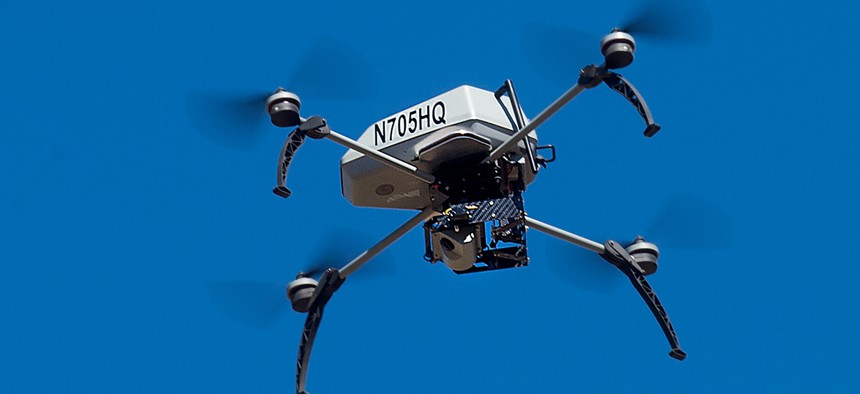Tokyo Police Use Nets to Capture Rogue Drones

A drone operated by the Alameda County Sheriff's Office flies during a demonstration of a search and rescue operation in Dublin, Calif. Noah Berger/AP File Photo
The idea of catching drones this way isn’t new, and Tokyo’s police chose the method after reviewing various anti-drone efforts underway in other nations.
In April, a drone landed radioactive material atop the Japanese prime minister’s official residence. (Its operator was angry about plans to restart the nation’s nuclear reactors.) After that incident, Tokyo’s police department has now announced drone counter-measures involving—you guessed it—drones.
Starting this month, the police drones will carry nets through the air to capture unwanted intruders flying above sensitive areas. A specialized unit will make trained personnel available around the clock to operate them.
The police unit will give an initial warning via loudspeaker in case an operator of an intruder drone is nearby and willing to cooperate; if not, it will attempt a capture. The Mainichi newspaper’s website has a video of a demonstration capture from Tokyo’s police department.
The idea of catching drones this way isn’t new, and Tokyo’s police chose the method after reviewing various anti-drone efforts underway in other nations. A video posted in January by France’s Groupe Assmann shows the same idea in action:
Yesterday (Dec.10), amendments to Japan’s civil aeronautics law came into effect prohibiting drones flying in densely populated residential areas and near airports. Violators could be fined as much as ¥500,000 (about $77,500).
Japan is not the only nation worried about intrusive drones. In February, authorities in Paris grew alarmed by drones seen flying at night over landmarks and sensitive areas, including subway stations. In January, a drunken government employee flew a drone over the White House in Washington, D.C. And near misses between passenger planes and helicopters are on the rise in the U.S. and worldwide.
Last month, the Chinese drone maker DJI introduced a “geofencing” feature that automatically prevents its products from entering sensitive airspace, such as over prisons, airports, and power plants. Starting this month, DJI’s drones sold in the US and Europe will have the feature.
NEXT STORY: House passes five-day CR


